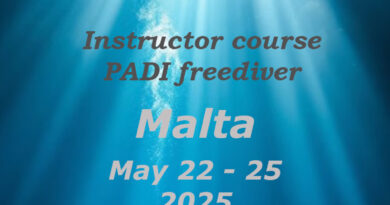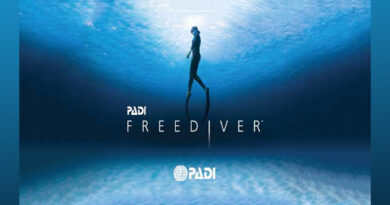Samba in Freediving: Recognize It, Manage It, Prevent It – Safety Comes First 🤿❤️
|| ScubaLiveTV || Insights || Actuality || Interviews || TV Web || History || Scuba Diving || Freediving || Video collection || Nature and Environment || Collaborate with us ||

Samba in Freediving: Recognize It, Manage It, Prevent It – Safety Comes First 🤿❤️
Freediving is an extraordinary discipline, built on control, awareness, and deep connection with one’s body. But like any underwater activity, it carries risks that must be understood and managed with the right preparation. One of these is the samba—a warning signal that must never be underestimated. In this article, we explore what it is, how it presents itself, what to do, and how to prevent it—always placing water safety at the center.
🫁 What Is a Samba in Freediving?
The term “samba” is commonly used in the freediving community to describe a temporary loss of muscle control that can occur in the seconds immediately following surfacing, due to hypoxia (a reduced level of oxygen in the blood).
It manifests as tremors, muscle spasms, instability, and uncontrolled movements—resembling dance-like motions, which is where the name comes from.
Although the freediver remains conscious, they are in a potentially dangerous condition and require immediate assistance.
👀 How to Recognize It: Signs Not to Ignore
A good freediving buddy must carefully observe their partner at every stage of the dive. Samba can be recognized by:
- Involuntary muscle movements or tremors after surfacing
- Loss of balance, inability to keep the face above water
- A blank or disoriented look
- Failure to respond coherently to the buddy’s questions
- Inability to complete the “OK” hand signal
In some cases, samba may precede a blackout, so prompt action is essential.
🆘 What Should the Buddy Do? The Life-Saving Procedure
In the event of a samba, the buddy’s quick response is vital. Follow these steps:
- Immediately assist the freediver, keeping their head above the water and supporting them under the armpits.
- If necessary, remove the mask or nose clip to facilitate breathing.
- Encourage active breathing with short, reassuring phrases:
“Breathe with me. You’re safe now.” - Ensure the diver’s face stays above water and maintain eye contact.
- Closely monitor the situation: if it worsens or the diver loses consciousness, proceed with blackout protocol and call for emergency support.
🛡️ How to Prevent Samba: Best Practices to Follow
Prevention is always better than intervention. Here are some tips to minimize the risk of samba during freediving:
- Never dive alone: Freediving should always be done in pairs, with trained and attentive buddies.
- Respect surface intervals: Allow adequate recovery time between dives.
- Don’t push your limits: The desire to beat personal records can lead you to ignore your body’s warning signs.
- Take proper training: Enroll in courses with certified instructors to learn safety protocols.
- Manage your emotions: Anxiety, stress, or euphoria can distort your perception of limits.
🤝 Safety Is a Shared Responsibility
Samba is a clear sign that something didn’t go as planned—but also an opportunity to reassess our approach to the sport. Remember:
no performance is worth more than your safety.
Training consistently, knowing the risks, and being present for your dive buddy is what makes freediving not just a thrilling sport—but also a safe and sustainable one.
Every freediver, beginner or experienced, should know what a samba is, how to spot it, and how to respond. Spreading this awareness means protecting lives, improving the culture of safety, and making every dive a more peaceful and fulfilling experience.
If you want to learn more, Underwater Academy offers freediving courses with a specific focus on safety, led by qualified instructors ready to guide you every step of the way.







